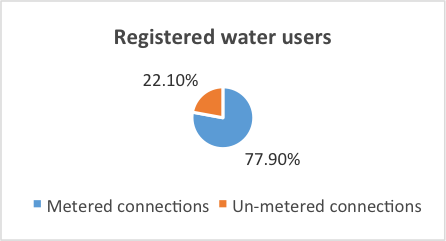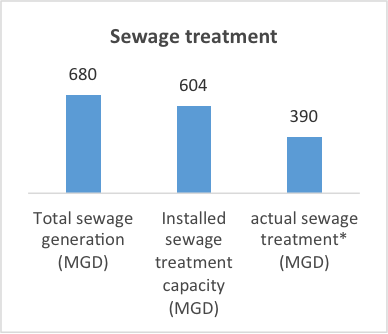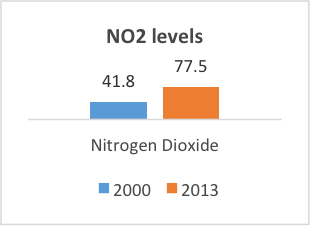Delhi is on the Verge of a Sustainability Nightmare
Swaniti Initiative | February 20, 2015 | The Swaniti Blog
Date of Release: February 3rd, 2015
Published in: Huffington Post
The BJP has been handed a comprehensive defeat in the Delhi elections. For some, that might mean a defeat of the BJP’s Vision Document 2050, which ends with Kiran Bedi’s “6-S” formula as the model for an ideal Delhi. Yet, the importance of these 6Ss – “Surakshit, Swachh, Saakshar, Saksham, Sanskaari, Sab ki” can hardly be disputed. If Kejriwal can indeed achieve all of these, he may guarantee another 5 year term for a party that has created political history in just the 3rd year of its existence. However, the immediate focus must be on another “S”, one that should be at the heart of all development, and that holds the key to Delhi’s future prosperity – Sustainability. The task before the new government however, is daunting.
This blog-piece looks at how far Delhi is from attaining sustainability in critical areas such as drinking water, waste and sewage, clean air, and energy.
Water: Though drinking water has remained a key poll issue, Delhi’s water woes aren’t going away unless something drastic is done to augment supply or reduce wastage. According to government estimates, close to 19% of Delhi’s households do not have access to piped water supply, making them dependent on wells, canals, rivers etc. A further 6% only have access to untreated water. Water supply capacity of the Delhi Jal Board has also remained stagnant over the past few years, even as the population of the city has steadily increased. Another major problem is the lack of metered connections in several households, rendering them ineligible for any kind of government benefits, including the 700 litres of free water promised by AAP to every household.


Source: Socio-economic profile of Delhi 2013-14, Census 2011, Delhi Jal Board
Waste: Sewage treatment and disposal poses another significant challenge to the city’s sustainability- both in terms of environmental degradation and health concerns. Presently, there is an 80 MGD (million gallons per day) shortfall in the sewage treatment capacity of the city, and the immediate task before the new government would be to expedite the construction of 5 new STPs in different parts of the city.

Source: DJB, * as on Nov 2014
Additionally, more effective solid waste management can be possible through more effective segregation of waste at the source, in which RWAs, NGOs and other community based organizations can play an important role.
Air quality: Air quality in Delhi remains a matter of grave concern, though it has never been given the political importance that it deserves. Since 2000, the rise in the concentration of atmospheric pollutants has been alarming, including dangerous carcinogenic substances such as sulphur and nitrogen dioxide. Most of this increase can be attributed to rapid increase in vehicular traffic in the city, despite the Delhi Metro transporting more than 2.5 million citizens from one part of NCR to another each day.



Source: Delhi Socio-economic profile 2013-14, Planning Department, GNCTD, all numbers in micrograms per cubic metre
Energy: Delhi’s per-capita power consumption of 1600 kWh annually (2012) was the 8th highest among all states and UTs in India. This is pretty high, considering that Delhi is neither an industrial city nor a capital-intensive agrarian economy. Between 2000 and 2012, consumption of power in Delhi rose by 140%, which has not been matched by a corresponding increase in total power generation. The result has been an increasing reliance on expensive power purchased from other states. Although transmission and distribution losses have come down significantly since the entry of private discoms in Delhi, their financial position and alleged irregularities remain politically sensitive issues. Unsurprisingly, all parties had promised lower power tariffs in their manifestos.
While capacity augmentation and efficiency enhancement of existing power plants may be one solution, Delhi needs to explore the option of renewable energy – both grid connected and off-grid systems – to meet some part of its energy need in the coming years. At present, grid-connected renewable sources of about 20 MW constitute less than 1% of Delhi’s installed energy capacity, according to the Energy Statistics Report, 2014 (Ministry of Statistics and Programme Implementation), while several states like Tamil Nadu, Gujarat, Rajasthan and Karnataka have a greater than 10% share of renewables in their installed capacity. Like other states, Delhi needs to promote rooftop solar power installations by providing suitable incentives. As the cost of solar power equipment comes down, and purchasing power from other states becomes more expensive, solar energy could become an extremely attractive and viable option for the state. Environmental conservation is an added motivation for focusing on renewable energy in a state like Delhi.
On almost all these issues of sustainability, party manifestos have always said all the right things. From water conservation through rainwater harvesting, to emphasis on public transport and multi-modal connectivity, to solar power, LEDs and waste management, the solutions are largely known. The challenge, as always, will lie in implementing them. The city can’t wait for too long.